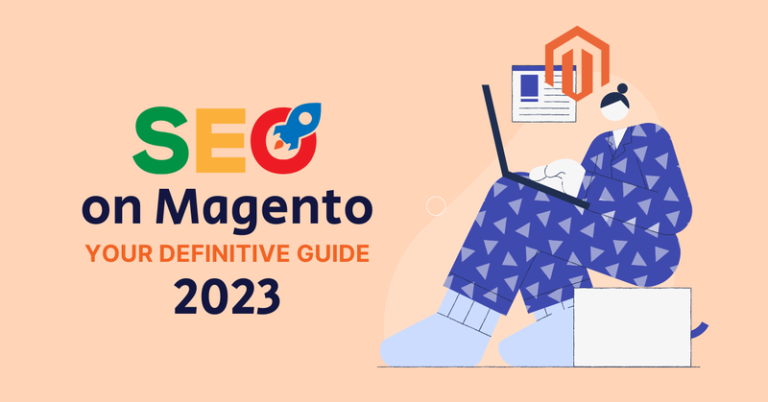Surviving in today’s cut-throat eCommerce realm can be extremely tricky. Not every Magento-based eCommerce store has the potential to succeed, and that’s where this article comes in handy. Discover some of the best practices for Magento SEO to give your store the competitive edge. In today’s digital age, any business can benefit from effective search engine optimization practices to ensure they strike the right balance.
Regardless of the need, whether you’re searching for a popular Chinese restaurant or IT-based courses, the first step for most people is a simple Google search. From everyday items to apparel, accessories, and electronic devices, the search engine is the go-to solution. Did you know that Google receives around 5 billion searches every day? So, why not strive for a higher rank on the search engine? Wondering how? Don’t worry; just read on in this post.
Have you ever heard of Magento SEO? It’s similar to SEO in general, with the only difference being the set of guidelines and features like robots.txt, meta robots, sitemaps, and canonical tags specific to Magento sites to improve their ranking.
Do you know what factors contribute to a well-ranking Magento store?
- Technology in Use: The technological foundation of the website needs to be robust. Search engines need to find and understand your site to determine its efficiency, loading speed, and relevance.
- Relevance: Ensuring your store is relevant is crucial for a good ranking. Creating useful, user-centric content communicates relevance clearly, making for a great website or eCommerce store.
- Trustworthiness: Lastly, the trustworthiness and authority of your website play a vital role in its ranking.
Without further ado, let’s delve into effective strategies to drive more sales to your Magento store. Here are some hand-picked Magento SEO best practices:
Magento SEO Best Practices
1. Using the Latest Magento Version: Ensuring you’re using an up-to-date Magento version is a critical SEO practice. For instance, if you’re still using Magento 1.x, it’s essential to upgrade, as it’s no longer seamlessly supported after 2020. Upgrading provides various benefits, including enhanced security, lean code, instant bug fixes, progressive web apps, Cache-Management ACL, GraphQL Language, Google reCAPTCHA, and more.
Additionally, optimizing URLs is crucial. Make sure each page has a unique and static URL.
Additional Tip: Avoid using unnecessary words and characters like ‘and,’ ‘or,’ ‘but,’ ‘of,’ ‘the,’ as well as special characters.
2. Using Canonical Tags: Implementing canonical tags is an important SEO practice for Magento. Google penalizes duplicate content, so using canonical tags and the Robots.txt file can prevent search engine bots from crawling disallowed pages on your eCommerce store.
Here are steps to tackle duplicate content:
- Go to your store configuration;
- Navigate to the catalog in the left-hand section;
- Click on search engine optimization;
- Enable canonical link meta tags for categories and products.
In addition to managing duplicate content, focus on using long-tail keywords and long-form content. Unique product descriptions for each product are essential to enhance SEO.
3. Image Optimization: Image optimization is a crucial Magento SEO practice. Well-optimized images are key to a successful eCommerce store. Uploading appropriately sized and weighted images is essential to maintain loading speed. Slow loading due to heavy images can lead to lower search engine rankings.
To optimize images:
- Use external picture editor tools;
- Upload images with appropriate extensions like JPEG and PNG;
- Choose the PNG format for displaying images on the website.
4. Website Loading Speed: Website loading speed is a critical factor. Around 47% of consumers expect the page to load within 3 seconds. Page loading time is a crucial search engine ranking factor, and slow-loading sites are not preferred by Google.
Consider the following to improve website loading speed:
- Choose the right hosting provider;
- Use Content Delivery Network (CDN);
- Utilize Browser caching;
- Merge and Minify Javascript and CSS files;
- Optimize all SEO URLs;
- Set up an XML Sitemap;
- Ensure mobile responsiveness;
- Incorporate customer reviews on product pages.
5. Mobile-Friendly: Ensuring your eCommerce store is mobile-friendly is essential. With the proliferation of smartphones, creating a mobile-friendly eCommerce store is crucial. Use themes that are highly compatible with various screen sizes (responsive themes) to accommodate the majority of traffic that comes from mobile devices. Search engines favor mobile-friendly eCommerce stores, making it essential to have a mobile-friendly website and a progressive web application (PWA).
Progressive web stores offer various benefits, including quick content loading, cost and time savings, easy content caching, seamless notifications, great consistency, and an amazing shopping experience for end users.




